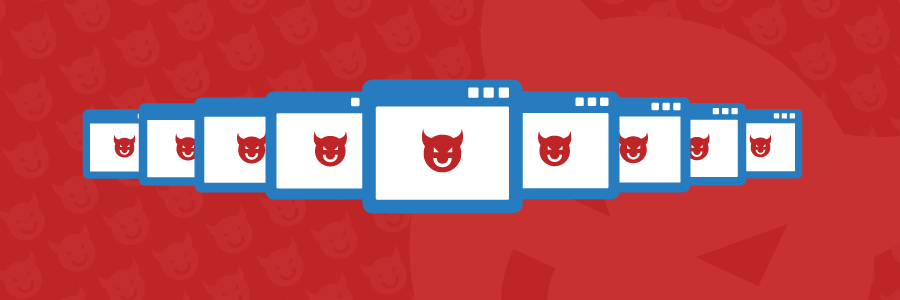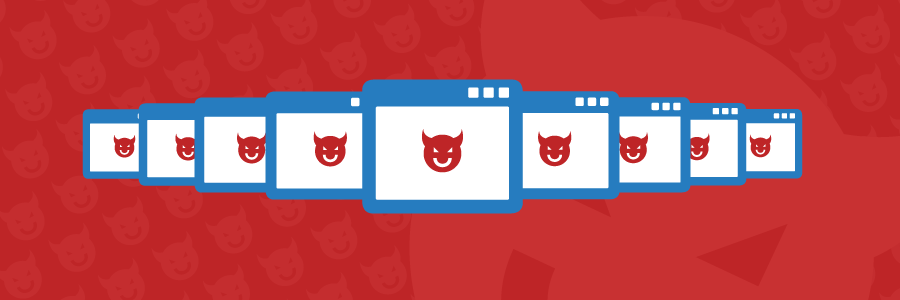Author Archives: Nick Sullivan
Author Archives: Nick Sullivan

Cloudflare’s mission is to help build a faster and more secure Internet. Over the last several years, the Internet Engineering Task Force (IETF) has been working on a new version of TLS, the protocol that powers the secure web. Last September, Cloudflare was the first service provider to enable people to use this new version of the protocol, TLS 1.3, improving security and performance for millions of customers.
Today we are introducing another performance-enhancing feature: zero round trip time resumption, abbreviated as 0-RTT. About 60% of the connections we see are from people who are visiting a site for the first time or revisiting after an extended period of time. TLS 1.3 speeds up these connections significantly. The remaining 40% of connections are from visitors who have recently visited a site and are resuming a previous connection. For these resumed connections, standard TLS 1.3 is safer but no faster than any previous version of TLS. 0-RTT changes this. It dramatically speeds up resumed connections, leading to a faster and smoother web experience for web sites that you visit regularly. This speed boost is especially noticeable on mobile networks.
We’re happy to announce that 0-RTT is Continue reading
Come join us on Cloudflare HQ in San Francisco on Tuesday, Febrary 28, 2017 for another cryptography meetup. We again had a great time at the last one, we decided to host another. It's becoming a pattern.
We’ll start the evening at 6:00p.m. with time for networking, followed up with short talks by leading experts starting at 6:30p.m. Pizza and beer are provided! RSVP here.
Here are the confirmed speakers:
Deirdre is a senior software engineer at Brightcove, where she is trying to secure old and new web applications. Her interests include applied cryptography, secure defaults, elliptic curves and their isogenies.
Post-quantum cryptography is an active field of research in developing new cryptosystems that will be resistant to attack by future quantum computers. Recently a somewhat obscure area, isogeny-based cryptography, has been getting more attention, including impressive speed and compression optimizations and robust security analyses, bringing it into regular discussion alongside other post-quantum candidates. This talk will cover isogeny-based crypto, specifically these recents results regarding supersingular isogeny diffie-hellman, which is a possible replacement for the ephemeral key exchanges in use today.
Maya Kaczorowski is a Product Manager at Google in Security Continue reading
Come join us on Cloudflare HQ in San Francisco on Tuesday, November 22 for another cryptography meetup. We had such a great time at the last one, we decided to host another.
We’ll start the evening at 6:00p.m. with time for networking, followed up with short talks by leading experts starting at 6:30p.m. Pizza and beer are provided! RSVP here.
Here are the confirmed speakers:
Emily Stark is a software engineer on the Google Chrome security team, where she focuses on making TLS more usable and secure. She spends lots of time analyzing field data about the HTTPS ecosystem and improving web platform features like Referrer Policy and Content Security Policy that help developers migrate their sites to HTTPS. She has also worked on the DevTools security panel and the browser plumbing that supports other security UI surfaces like the omnibox. (That green lock icon is more complicated than you'd think!)
Previously, she was a core developer at Meteor Development Group, where she worked on web framework security and internal infrastructure, and a graduate student researching client-side cryptography in web browsers. Emily has a master's degree from MIT and a bachelor's degree from Stanford, Continue reading
Encrypting the web is not an easy task. Various complexities prevent websites from migrating from HTTP to HTTPS, including mixed content, which can prevent sites from functioning with HTTPS.
Opportunistic Encryption provides an additional level of security to websites that have not yet moved to HTTPS and the performance benefits of HTTP/2. Users will not see a security indicator for HTTPS in the address bar when visiting a site using Opportunistic Encryption, but the connection from the browser to the server is encrypted.
In December 2015, CloudFlare introduced HTTP/2, the latest version of HTTP, that can result in improved performance for websites. HTTP/2 can’t be used without encryption, and before now, that meant HTTPS. Opportunistic Encryption, based on an IETF draft, enables servers to accept HTTP requests over an encrypted connection, allowing HTTP/2 connections for non-HTTPS sites. This is a first.
Combined with TLS 1.3 and HTTP/2 Server Push, Opportunistic Encryption can result in significant performance gains, while also providing security benefits.
Opportunistic Encryption is now available to all CloudFlare customers, enabled by default for Free and Pro plans. The option is available in the Crypto tab of the CloudFlare dashboard:

Opportunistic Encryption Continue reading
CloudFlare is turbocharging the encrypted internet
The encrypted Internet is about to become a whole lot snappier. When it comes to browsing, we’ve been driving around in a beat-up car from the 90s for a while. Little does anyone know, we’re all about to trade in our station wagons for a smoking new sports car. The reason for this speed boost is TLS 1.3, a new encryption protocol that improves both speed and security for Internet users everywhere. As of today, TLS 1.3 is available to all CloudFlare customers.
Many of the major web properties you visit are encrypted, which is indicated by the padlock icon and the presence of “https” instead of “http” in the address bar. The “s” stands for secure. When you connect to an HTTPS site, the communication between you and the website is encrypted, which makes browsing the web dramatically more secure, protecting your communication from prying eyes and the injection of malicious code. HTTPS is not only used by websites, it also secures the majority of APIs and mobile application backends.
The underlying technology that enables secure communication on the Internet is a protocol called Transport Layer Security (TLS). Continue reading
Since CloudFlare’s inception, we have worked tirelessly to make encryption as simple and as accessible as possible. Over the last two years, we’ve made CloudFlare the easiest way to enable encryption for web properties and internet services. From the launch of Universal SSL, which gives HTTPS to millions of sites for free, to the Origin CA, which helps customers encrypt their origin servers, to the “No Browser Left Behind” initiative, which ensures that the encrypted Internet is available to everyone, CloudFlare has pushed to make Internet encryption better and more widespread.
This week we are introducing three features that will dramatically increase both the quality and the quantity of encryption on the Internet. We are are happy to introduce TLS 1.3, Automatic HTTPS Rewrites, and Opportunistic Encryption throughout this week. We consider strong encryption to be a right and fundamental to the growth of the Internet, so we’re making all three of these features available to all customers for free.
Every day this week there will be new technical content on this blog about these features. We're calling it Encryption Week.
HTTPS is the standard for web Continue reading
At CloudFlare we strive to combine features that are simple, secure, and backed by solid technology. The Origin CA is a great example of this. You no longer need to go to a third-party certificate authority to protect the connection between CloudFlare and your origin server. You can now get a certificate to encrypt the connection between CloudFlare and the origin from CloudFlare directly with one click.
In certificate-based security, the most important thing is protecting the private key. We designed the one-click certificate dashboard to maximize private key security. Your private key is created client-side in your browser using the W3C’s Web Crypto API and only the public key is sent to CloudFlare’s servers. This security feature turned out to be a big win for usability as well as an interesting technical challenge.
Most certificate authorities (CAs) specialize in one type of transaction: they take a certificate signing request (CSR) (and sometimes a fee) and in return they provide a signed certificate. A CSR is a way to tell a certificate authority what your public key is and to prove you have control of the corresponding private key. The certificate authority doesn’t Continue reading
Over the last few years, the IETF community has been focused on improving and expanding the use of the technical foundations for Internet security. Part of that work has been updating and deploying protocols such as Transport Layer Security (TLS), with the first draft of the latest version of TLS, TLS 1.3, published a bit more than two years ago on 17 April 2014. Since then, work on TLS 1.3 has continued with expert review and initial implementations aimed at providing a solid base for broad deployment of improved security on the global Internet.
 CC BY 2.0 image by Marie-Claire Camp
CC BY 2.0 image by Marie-Claire Camp
In February of this year, the Internet Society hosted the TRON (TLS 1.3 Ready Or Not) workshop. The main goal of TRON was to gather feedback from developers and academics about the security of TLS 1.3. The conclusion of the workshop was that TLS 1.3 was, unfortunately, not ready yet.
One of the reasons it was deemed not yet ready was that there needed to be more real-world testing of independently written implementations. There were some implementations of the core protocol, but nobody had put together a full browser-to-server test. And some Continue reading
CloudFlare Crypto Meetup Teaser.
Now back in HD: the CloudFlare Cryptography Meetup series. A while back, CloudFlare hosted a pair of Meetups focused on encryption and cryptographic technology. Now that CloudFlare HQ has moved into our beautiful new home at 101 Townsend in San Francisco, we’ve decided to bring the crypto back.
In this series, we’ve invited experts from academia and industry to talk about the cryptographic protocols they are working on and to share experiences around deploying cryptographic applications in the real world. This is the place to geek out on crypto!
These talks are intended to explore interesting new crypto topics in an accessible way. It aims to be informative and thought provoking, and practical examples are encouraged.
We’ll start the evening at 6:00p.m. with time for networking, followed up with short talks by leading experts. Pizza and beer are provided!
Whether you're a cryptography hobbyist, an industry expert or just interested in the subject, come visit CloudFlare’s world headquarters at 6:00pm on April 21st.
RSVP here on Meetup.com.
The confirmed speakers for April 21st are Brian Warner, Zakir Durumeric and Amine Kamel.
"magic-wormhole" is a simple tool to move files from Continue reading
Continuing our commitment to high quality open-source software, we’re happy to announce release 1.2 of CFSSL, our TLS/PKI Swiss Army knife. We haven’t written much about CFSSL here since we originally open sourced the project in 2014, so we thought we’d provide an update. In the last 20 months, we have added a ton of great features, and CFSSL has attracted an active community of users and contributors. Users range from large SaaS providers (Heroku) to game companies (Riot Games) and the newest Certificate Authority (Let’s Encrypt). For them and for CloudFlare, CFSSL has become a core tool for automating certificates and TLS configurations. With added support for configuration scanning, automated provisioning via the transport package, revocation, certificate transparency and PKCS#11, CFSSL is now even more powerful.
We’re also happy to announce CFSSL’s new home: cfssl.org. From there you can try out CFSSL’s user interface, download binaries, and test some of its features.
This 2013 National Security Agency (NSA) slide describing how data from Google’s internal network was collected by intelligence agencies was eye-opening—and shocking—to many technology companies. The idea that an attacker could read messages passed between services wasn’t technically groundbreaking, but it Continue reading
If you’re in Buenos Aires on April 2-3 and are interested in building, come join the IETF Hackathon. CloudFlare and Mozilla will be working on TLS 1.3, the first new version of TLS in eight years!
At the hackathon we’ll be focusing on implementing the latest draft of TLS 1.3 and testing interoperability between existing implementations written in C, Go, OCaml, JavaScript and F*. If you have experience with network programming and cryptography, come hack on the latest and greatest protocol and help find problems before it is finalized. If you’re planning on attending, add your name to the Hackathon wiki. If you can’t make it, but implementing cryptographic protocols is your cup of tea, apply to join the CloudFlare team!
We’re very excited about TLS 1.3, which brings both security and performance improvements to HTTPS. In fact, if you have a client that speaks TLS 1.3 draft 10, you can read this blog on our TLS 1.3 mirror: tls13.cloudflare.com.
We hope to see you there!

At CloudFlare, we’re committed to making sure the encrypted web is available to everyone, even those with older browsers. At the same time, we want to make sure that as many people as possible are using the most modern and secure encryption available to them. Improving the cryptography used by the majority requires a coordinated effort between the organizations building web browsers and API clients and those working on web services like CloudFlare. Cryptography is a two-way street. Even if we support the most secure cryptographic algorithms for our customers, web visitors won’t get the benefit unless their web client supports the same algorithms.
In this blog post we explore the history of one widely used cryptographic mode that continues to cause problems: cipher block chaining (CBC). We’ll explain why CBC has proven difficult to use safely, and how recent trends in the adoption of secure ciphers by web clients have helped reduce the web’s reliance on this technology. From CloudFlare’s own data, we’ve seen the percentage of web clients that support safer cipher modes (such as AEAD) rise from under 50% to over 70% in six months, a good sign for the Internet.
Ciphers Continue reading
The web is an collaborative ecosystem. Web standards exist to ensure that participants of the network behave in a predictable way. If network participants deviate from the established standards then there can be unintended consequences. This blog post is about one of these unintended consequences.
A group of researchers recently published a paper "Forwarding Loop Attacks in the Content Delivery Networks" describing what can happen when web services interact in a non-compliant way. They describe an attack where a malicious user can force multiple service providers to send each other an unending stream of requests in a loop. This request loop can result in resource exhaustion and denial of service at the service provider. This paper also demonstrated that the attack is practical, and can be performed using a large list of service providers.
CloudFlare's service has been modified to be standards-compliant with respect to HTTP proxying. However, fixing the vulnerability that enables this attack requires all proxy services to conform to the same standards. If even one service provider is non-compliant, the attack can still be carried out against compliant services. In this post, we will describe the attack and explain how a proxy services can go from being Continue reading
It’s well known that SHA-1 is no longer considered a secure cryptographic hash function. Researchers now believe that finding a hash collision (two values that result in the same value when SHA-1 is applied) is inevitable and likely to happen in a matter of months. This poses a potential threat to trust on the web, as many websites use certificates that are digitally signed with algorithms that rely on SHA-1. Luckily for everyone, finding a hash collision is not enough to forge a digital certificate and break the trust model of the Internet.
We’ll explore how hash collisions have been used to forge digital signatures in the past. We’ll also discuss how certificate authorities can make this significantly harder for attackers in the future by including randomness in certificate serial numbers.
The Internet relies on trust. Whether it’s logging in to your bank or reading Reddit, HTTPS protects you by encrypting the data you exchange with a site and authenticating the site's identity with a digital certificate. Browsers visually display the added security of HTTPS as a padlock in the address bar.
HTTPS can prove a site’s authenticity to a browser when a Continue reading
A major part of securing a network as geographically diverse as CloudFlare’s is protecting data as it travels between datacenters. Customer data and logs are important to protect but so is all the control data that our applications use to communicate with each other. For example, our application servers need to securely communicate with our new datacenter in Osaka, Japan.
 CC BY-SA 2.0 image by kris krüg
CC BY-SA 2.0 image by kris krüg
Great security architecture requires a defense system with multiple layers of protection. As CloudFlare’s services have grown, the need to secure application-to-application communication has grown with it. As a result, we needed a simple and maintainable way to ensure that all communication between CloudFlare’s internal services stay protected, so we built one based on known and reliable protocols.
Our system of trust is based on a Public Key Infrastructure (PKI) using internally-hosted Certificate Authorities (CAs). In this post we will describe how we built our PKI, how we use it internally, and how to run your own with our open source software. This is a long post with lots of information, grab a coffee!
Most reasonably complex modern web services are not made up of one monolithic Continue reading

Thousands of developers use CloudFlare to accelerate and secure the backend of their mobile applications and websites. This week is Apple’s Worldwide Developers Conference (WWDC), where thousands of Apple developers come to San Francisco to talk, learn and share best practices for developing software for Apple platforms. New announcements from Apple this week make CloudFlare an even more obvious choice for application developers.
The flagship announcement of WWDC 2015 was a new version of Apple’s mobile operating system, iOS 9, to be released in September with a developer preview available now. They also announced a new Mac operating system, OS X El Capitan, launching in the fall. Apple has a track record of developing and supporting technologies that enhance user privacy and security with iMessage and Facetime and the trend is continuing with these new operating systems. In both cases, Apple is requiring application developers to make use of two network technologies that CloudFlare is big fan of: HTTPS and IPv6.
For iOS 9 and El Capitan, all applications submitted to the iOS and Mac App Stores must work over IPv6. In previous versions, applications were allowed that only worked with IPv4.
From Continue reading

 CloudFlare protects millions of websites from online threats. One of the oldest and most pervasive attacks launched against websites is the Distributed Denial of Service (DDoS) attack. In a typical DDoS attack, an attacker causes a large number of computers to send data to a server, overwhelming its capacity and preventing legitimate users from accessing it.
CloudFlare protects millions of websites from online threats. One of the oldest and most pervasive attacks launched against websites is the Distributed Denial of Service (DDoS) attack. In a typical DDoS attack, an attacker causes a large number of computers to send data to a server, overwhelming its capacity and preventing legitimate users from accessing it.
In recent years, DDoS techniques have become more diversified: attackers are tricking unsuspecting computers into participating in attacks in new and interesting ways. Last year, we saw what was likely the largest attack in history (>400Gbps) performed using NTP reflection. In this attack, the unsuspecting participants were misconfigured NTP servers worldwide. This year, we’re seeing a disturbing new trend: attackers are using malicious JavaScript to trick unsuspecting web users into participating in DDoS attacks.
The total damage that can be caused by a NTP or DNS reflection attack is limited by the number of vulnerable servers. Over time, this number decreases as networks patch their servers, and the maximum size of the attack is capped at the outbound capacity of all the vulnerable servers. For JavaScript-based DDoS, any computer with a browser can be enrolled in the attack, making the potential attack volume nearly Continue reading
 Last September, CloudFlare unveiled Universal SSL, enabling HTTPS support for all sites by default. All sites using CloudFlare now support strong cryptography from the browser to CloudFlare’s servers. One of the most popular requests for Universal SSL was to make it easier to encrypt the other half of the connection: from CloudFlare to the origin server.
Last September, CloudFlare unveiled Universal SSL, enabling HTTPS support for all sites by default. All sites using CloudFlare now support strong cryptography from the browser to CloudFlare’s servers. One of the most popular requests for Universal SSL was to make it easier to encrypt the other half of the connection: from CloudFlare to the origin server.
Until today, encryption from CloudFlare to the origin required the purchase of a trusted certificate from a third party. The certificate purchasing process can be tedious and sometimes costly. To remedy this, CloudFlare has created a new Origin CA service in which we provide free limited-function certificates to customer origin servers.
Today we are excited to announce the public beta of this service, providing full encryption of all data from the browser to the origin, for free.
CloudFlare offers three modes for HTTPS: Flexible, Full and Strict. In Flexible mode, traffic from browsers to CloudFlare is encrypted, but traffic from CloudFlare to a site's origin server is not. In Full and Strict modes, traffic between CloudFlare and the origin server is encrypted. Strict mode adds validation of the origin server’s certificate. We strongly encourage customers to select Strict mode Continue reading
 CC BY-ND 2.0 image image by Clinton Steeds
CC BY-ND 2.0 image image by Clinton Steeds
CloudFlare is always trying to improve customer experience by adopting the latest and best web technologies so that our customers (and their visitors) have a fast and a secure web browsing experience.
More and more web sites are now using HTTPS by default. This sea change has been spearheaded by many groups including CloudFlare enabling free SSL for millions of sites with Universal SSL, Google moving towards marking plain HTTP as insecure in Chrome, and the Let’s Encrypt project’s plans to make certificates free in 2015.
Not only is the encrypted web more secure, it can also be faster than the unencrypted web if the latest HTTPS features are implemented. HTTPS sites are blazing fast on CloudFlare because we keep up with the latest performance-enhancing features:
Kyoto Tycoon is a distributed key-value store written by FAL Labs, and it is used extensively at CloudFlare. Like many popular key-value stores, Kyoto Tycoon uses timestamp-based replication to ensure eventual consistency and guarantee ordering. Kyoto Tycoon is an open source project, and in the spirit of the holidays, we’re contributing our internal changes back to the open source project.
 CC BY-ND 2.0 image by Moyan Brenn
CC BY-ND 2.0 image by Moyan Brenn
CloudFlare uses Kyoto Tycoon to replicate data from a Postgres Database to our 30 data centers around the world. In practice, it takes around 3 seconds for full propagation in normal conditions. This is our pipeline for distributing sensitive data like our session ticket keys and DNS data to the CloudFlare edge.
If the Internet is not a dangerous place, it at least has dangerous neighborhoods. To move from one datacenter to another, data has to pass through the public Internet. Data could end up going though some network with a wire-tap in place, or through a network with an unscrupulous network operator.
Datacenter-to-datacenter encryption has been brought into the international spotlight since the surveillance revelations. One of the leaked slides contained the expression “SSL added Continue reading